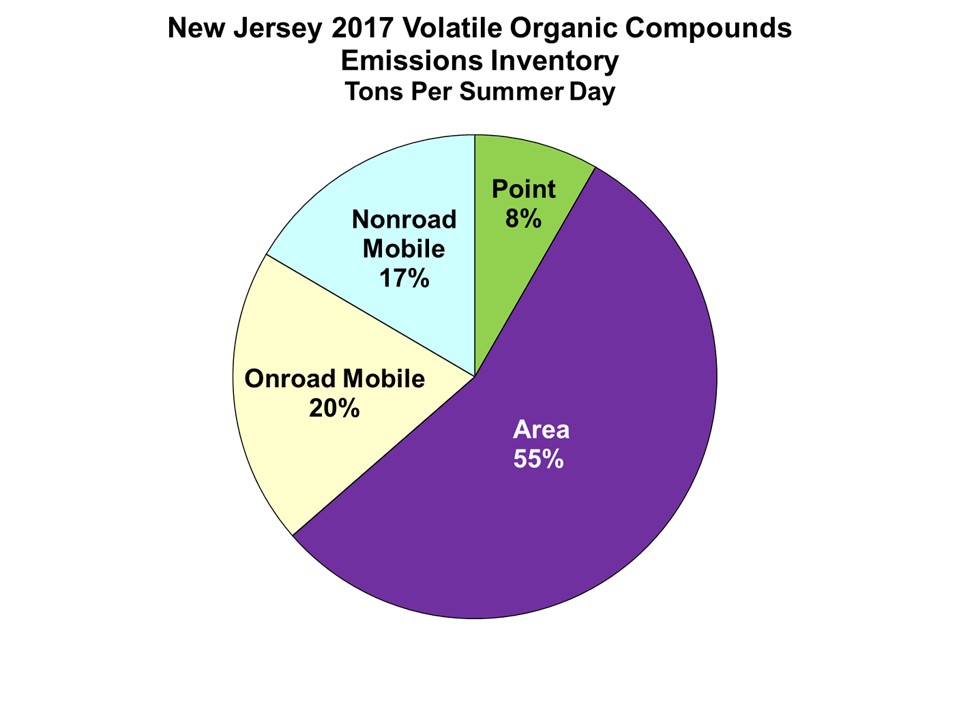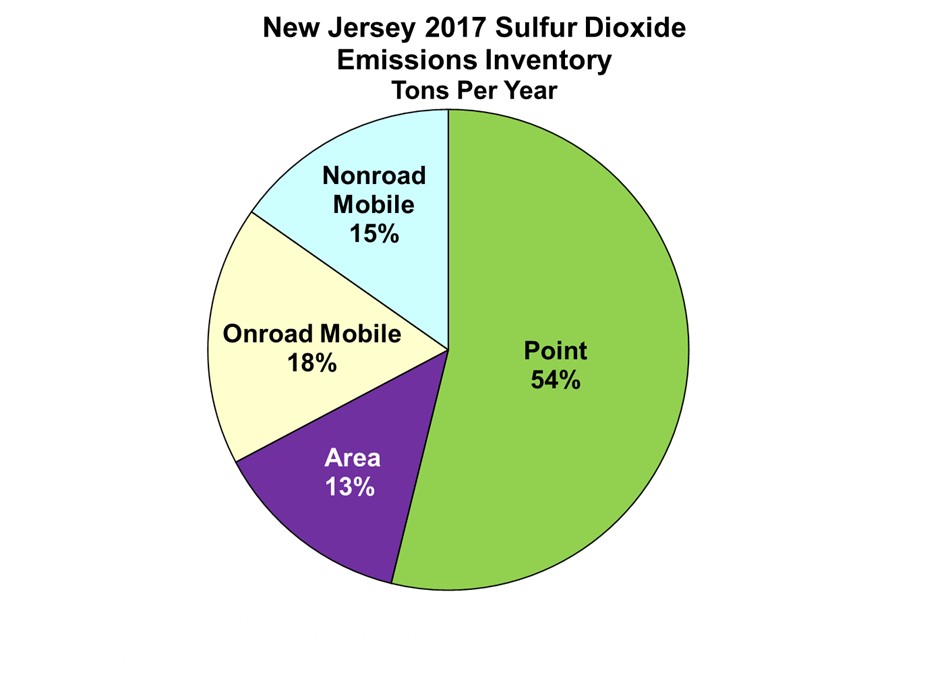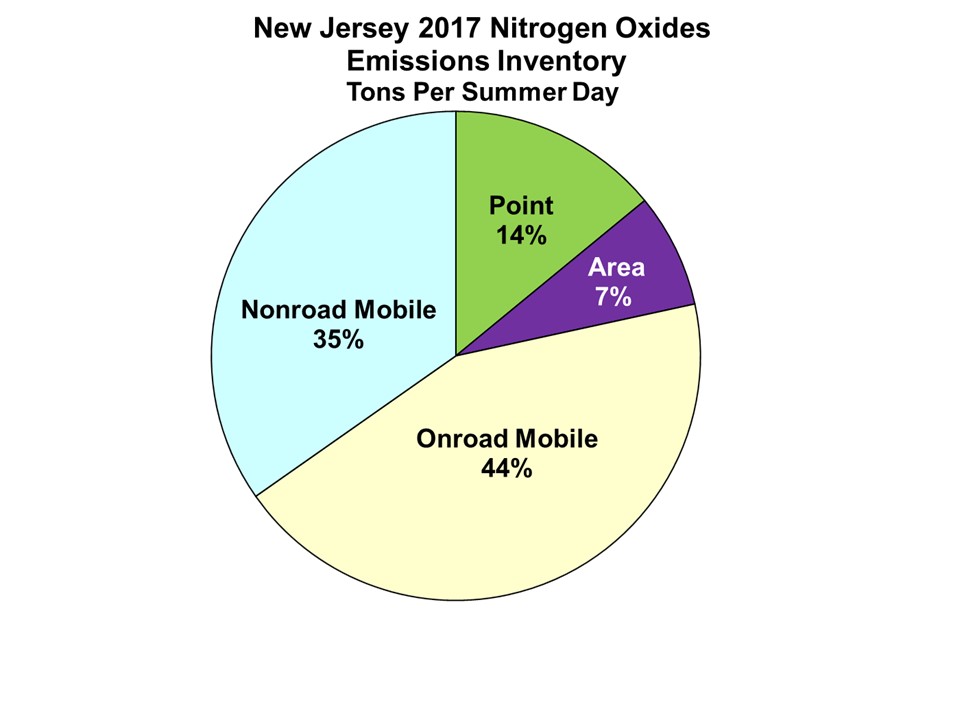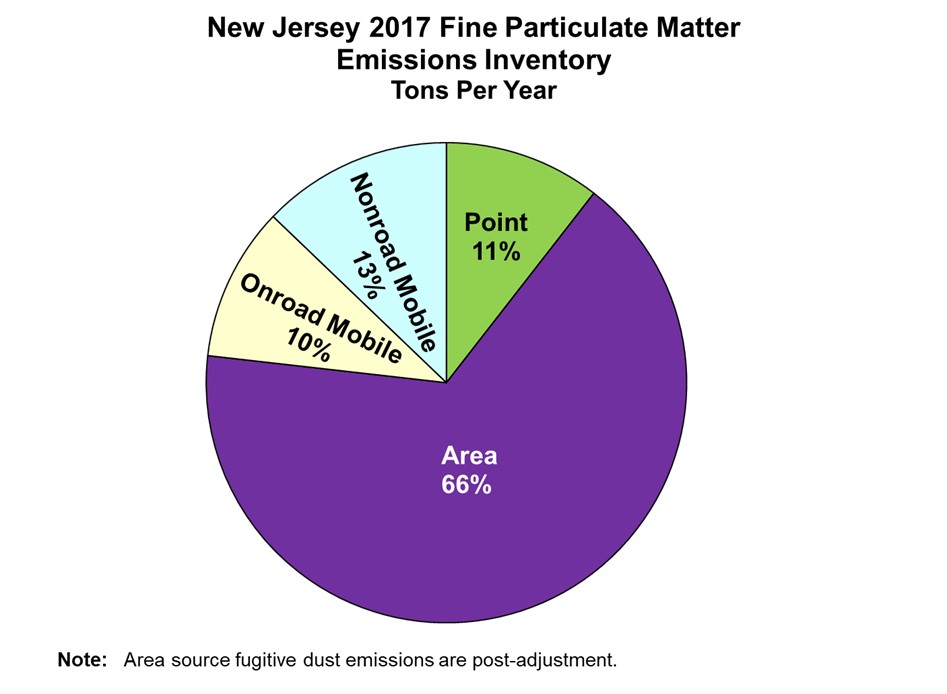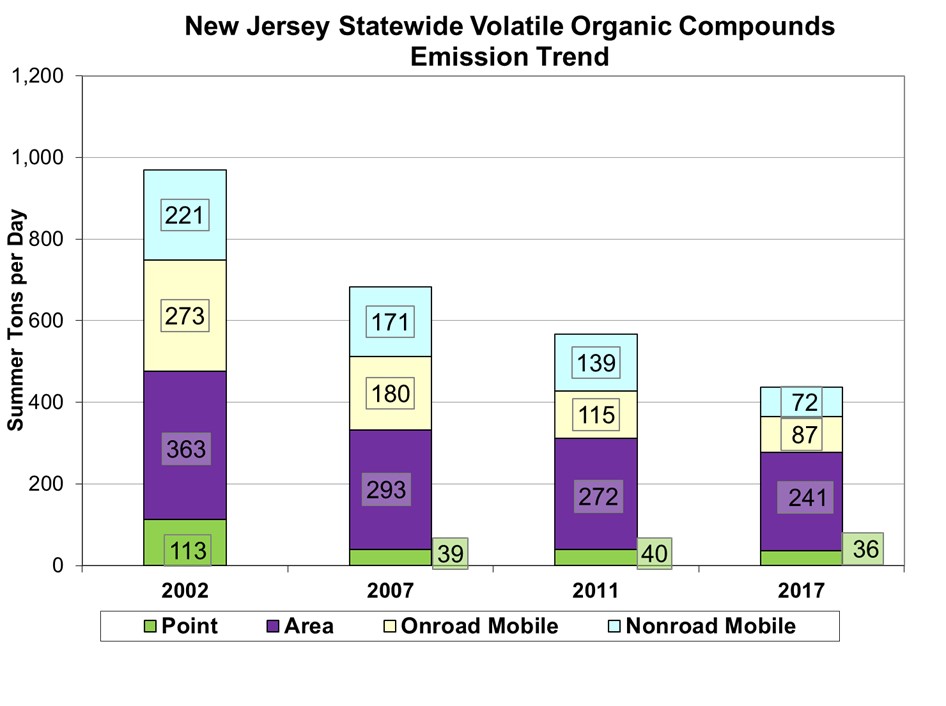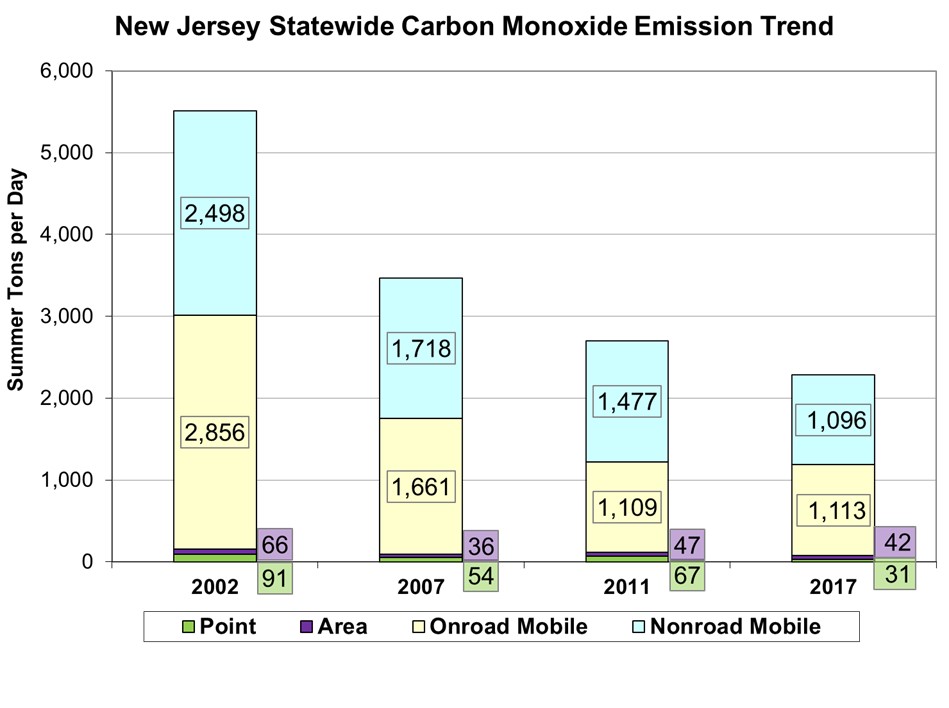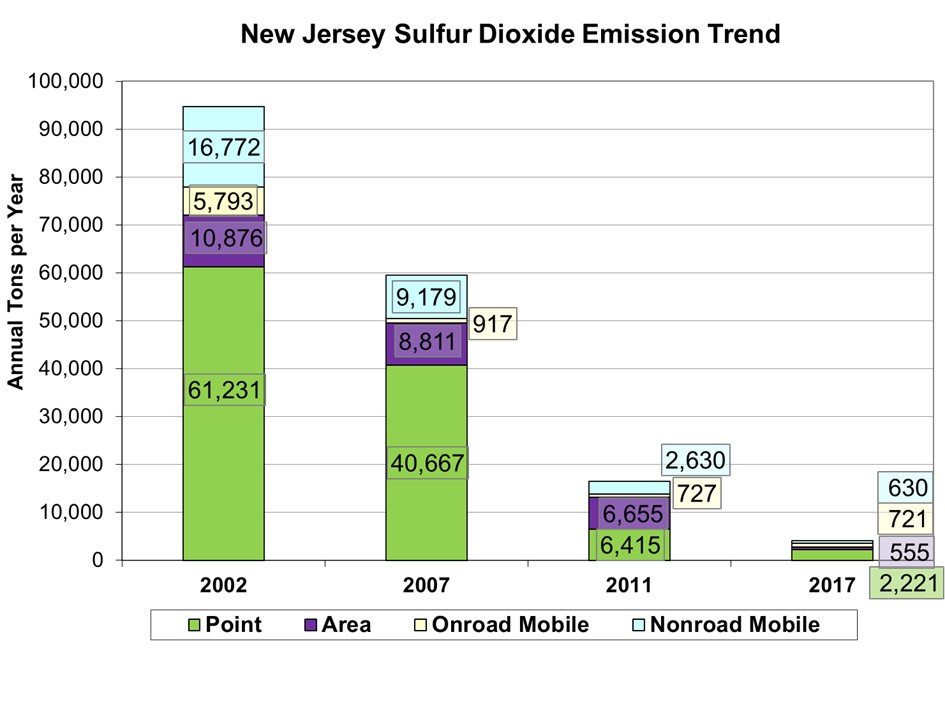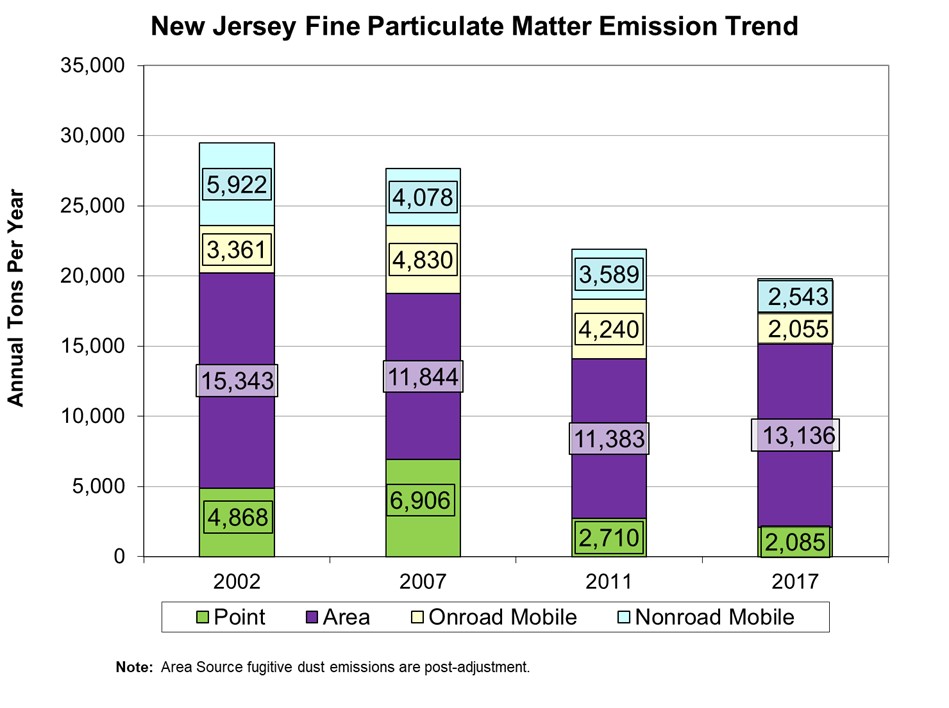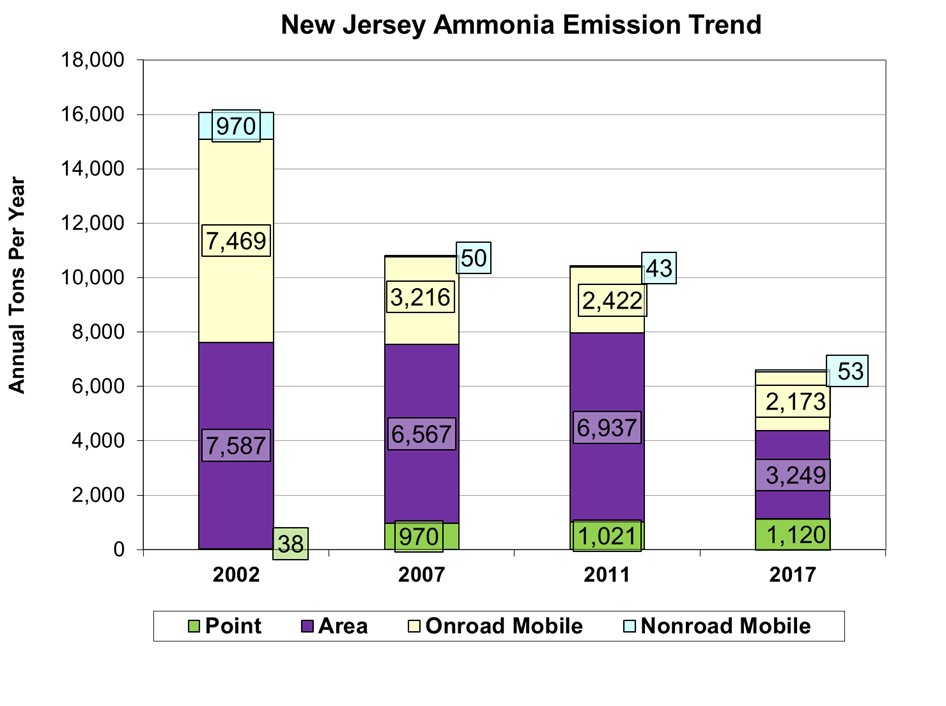Criteria Pollutant Air Emissions Inventories
An air emission inventory is a compilation of air pollutant emissions from sources of anthropogenic (human-made) and biogenic (naturally occurring) sources. The sources are divided into five sectors, each making up one component of the inventory: point sources (large stationary), area sources (small stationary), onroad mobile sources, nonroad mobile sources and biogenic (naturally occurring).
New Jersey’s Bureau of Evaluation and Planning estimates and compiles inventories that consist of actual and projected (future estimated) air emissions for the following criteria pollutants: volatile organic compounds (VOC), nitrogen oxides (NOx), carbon monoxide (CO), particulate matter (fine PM2.5 and course PM10), sulfur dioxide (SO2), and ammonia (NH3). A summary of those emissions is presented below. Additional information on emission inventories, including hazardous air pollutants, can be found on USEPA’s website at: https://www.epa.gov/air-emissions-inventories.
Notes:
1. More information on New Jersey’s 2017 emissions inventory can be found in the State of New Jersey Department of Environmental Protection Proposed State Implementation Plan (SIP) Revision for the Attainment and Maintenance of the Ozone National Ambient Air Quality Standards, 2008 75 ppb 8-Hour Ozone Attainment Demonstration Northern New Jersey-New York-Connecticut Nonattainment Area, 2008 75 ppb and 2015 70 ppb 8-Hour Ozone Reasonably Available Control Technology (RACT) Determinations and Nonattainment New Source Review (NNSR) Program Compliance Certifications and 2017 Periodic Emissions Inventory, May 2021 which can be found at here.
2. Trends also reflect changes in emission estimation methodologies and models, which sometimes result in higher emission estimates and will appear to be shown as an emission increase.
3. Wildfires and prescribed burning are not included in the graphs.
